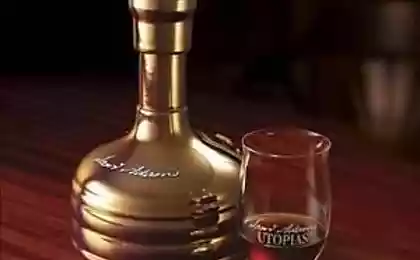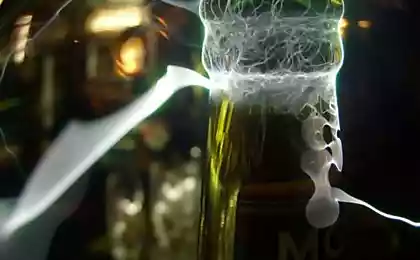469
10 important discoveries made thanks to the beer
Eighty six million one hundred four thousand three hundred thirty seven
Amber liquid deserves respect for a lot of major changes and achievements, which leads to lfuda throughout the history of mankind. No, of course no smoke without fire, but this list deserves attention.
Охлаждение
Refrigerators keep our food fresh and safe for consumption. They are absolutely necessary for our survival and prosperity in the modern world. We also use them to cool the beer, and to be honest, just for this once, the fridge was created.
Brewing traditionally occurs during the cold months of the year as it is an exothermic process. It produces heat and too much heat can kill the yeast and ruin your beer. For hundreds of years, blocks of ice were collected and stored in the cellars to keep the beer cold. Then Carl von Linde achieved a breakthrough in the field of mechanical refrigeration, as an employee of the brewery Spaten in Munich.
By the 1880s, the cooling became popular in Breweries. It was expensive, but were allowed to brew beer all year round. In addition, it is possible to create a brewery far away from all sources of ice. It also led to the tradition to drink beer chilled, and after the refrigerators are already nestled in every home.
Glass бутылки
Although the beer and did not create glass, it was the driving force behind the creation of glass bottles, which today houses everything from amber Ales to the water, ketchup, baby milk and medicines. This is one of the earliest examples of large-scale mechanical production, which has developed in the 20th century.
The main acting character in this story is Michael Joseph Owens. With Libbey Glass he brought to market his product machine for the mass creation of glass bottles and bottles with long necks flooded the market. The car Owens was a resounding success. By 1903 he had established a commercial machine that could inflate 12 glass bottles per minute. By 1912 she was already doing 50 every minute. The machine, developed by Owens, by 1915, used around the world.
The company formed Owens owned the rights to the creation of brandies, wines and special bottles. Exclusive rights were sold to Heinz for ketchup, Hazel-Atlas bottle and General purpose Ball Brothers fruit jars.
Pasteurization and microbial теория
The process of pasteurization today is usually associated with milk. It includes heating and subsequent cooling of the substance to eliminate harmful bacteria. However, the man who discovered the benefits of this process, Louis Pasteur, not really worried about milk — he wanted to save the beer.
Local brewery wanted to know why their beer is spoiled, and assistance to local industries was part of the work of Pasteur in the University of Lille. They hired Pasteur, who demonstrated that the cause of spoilage are bacteria, which can be removed by heating and cooling beer. The process called pasteurization.
This process (and all thanks to experiments with beer) has led to the development and validation of microbial theory, which established that diseases are caused by external pathogens. Previously it was thought that pathogens are spontaneously formed inside the substance, and do not come from the outside. This, in turn, led to the advent of vaccinations and modern medicines. Just people are tired of the sour beer.
Accurate термометр
James Joule needed in the specific conditions and skills learned in the brewery to measure and determine mechanical heat. For example, the ambient temperature had to be precise, he had to work and couldn't be disturbed. In these unique circumstances he conducted his experiments, after which affect all of physics.
In the brewery, Joule realized that he needed a more accurate thermometer, and created the mercury version, which came to replace the not particularly accurate air thermometer. More importantly, in the brewery, Joule has developed many other concepts, which together made a powerful contribution to the development of thermodynamics.
Scale pH
PH scale (pH) is an important and integral part of modern science in several ways. It defines the acidity or alkalinity of a solution. pH 7 is neutral, below is acid, above is alkaline, 14 — most alkaline solutions. This scale describes the optimal levels of acidity in the body fluids and drinking water. And it's all thanks to a bunch of beer fans who were irritated that they could not measure the acidity of his beer.
Frustrated brewers Carlsberg wanted to get a standard measure to describe the acidity of their product. They had to use subjective terms, which were not quite accurate. The establishment of such a scale allowed them to control the fermentation of their beer, and the other to repeat the process with the same result. All thanks to Serena Pedaru Laurico to Sørensen, who led the Carlsberg laboratory from 1901 to 1938.
a t-test or t-test Стьюдента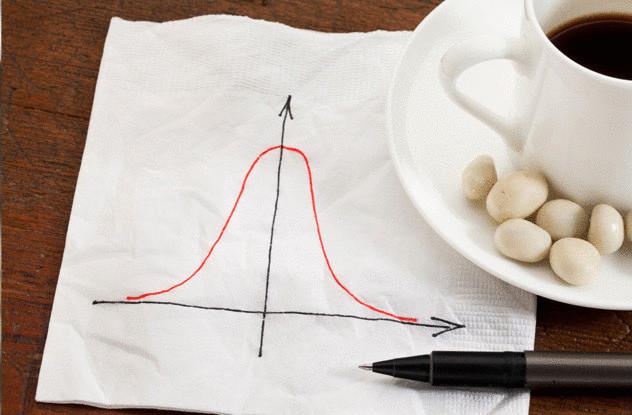
When conducting research, ideally you want to get a huge sample to test his hypothesis. But in life not everything is perfect. What to do if such a sample is not available?
This problem has faced the brewers Guinness (Guinness), because they could not reproduce the tests of new varieties of barley. The sample was small, and needed a whole year for growing a new crop, which certainly influenced by different weather conditions. It was like trying to estimate the population of 1000 people, based on a group of 10.
Brewer William Seely Gosset developed the t-test as a solution to this problem, published in international journal under the name Student because he was not allowed to use his real name. student's t-test in the technical sense is the assessment of the hypothesis on the basis of a small sample when the standard deviation is unknown.
Carbon dioxide
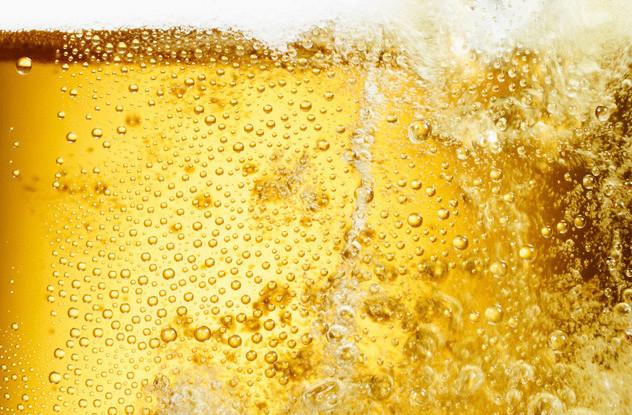
Once the air was considered a uniform substance, and not a combination of gases that we know today. But thanks to the beer Joseph Priestley discovered carbon dioxide. And with it the existence of separate gases.
Living next door to a brewery, Priestley noticed that the gas emitted by fermenting a mixture, falls to the ground, indicating that it is heavier than air. This opened the carbon dioxide. In addition, Priestley noted that the gas extinguishes a burning tree. If you want to understand how to produce carbon dioxide without alcohol, naturalist along the way invented the fizzy drink that we all love so much.
Subsequently this monumental discovery inspired Priestley to clarify types of "air" (gas) floating around. Ultimately Priestley discovered not only carbon dioxide and oxygen, but also six other gases, including laughing.
The era исследований
European travel and colonization in the era of geographical discoveries was very long, and sometimes there was no way to stay at port to restock. Thus, the diet on Board was to be kept long enough that the crew died of hunger on the way.
When Christopher Columbus left the shores of the Iberian Peninsula in search of a new world of food on Board was hard cheese varieties, honey, olives, anchovies and, of course, barrels and barrels of beer. The sailors drank a gallon of beer a day. Water could deteriorate under the deck, so in long voyages the sailors drank mostly beer.
Colonization Америки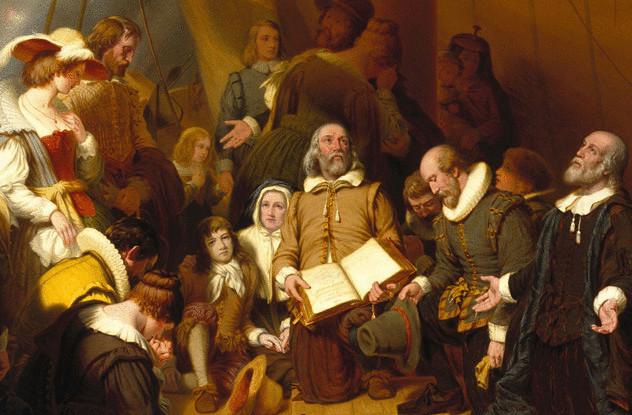
The colonization of the American coast could not happen without beer. In those days the Europeans were not fans of drinking water. In the old countries, it was considered unsafe, so instead drank beer. The first settlers, however, were treated with water. But the further South you go, the more likely it was that the water is contaminated with dangerous pathogens.
When the first pilgrims were about to go to America in the 1600's, one of the main points of concern was that they get sick because they have to drink water. The sailors, fearing that the passengers would consume too much beer, threw the pilgrims out to the North. But the settlers found that the water in the North are very tasty and drinkable, to my surprise.
In the colony of Virginia in 1630, the year led to some relief — the settlers began to brew beer. The colony was under threat because of high mortality, but the emergence of alcohol helped her to stand.
Коммунизм
Nothing was more controversial and influential philosophical doctrines in the 19th and 20th centuries than communism. The original "Communist Manifesto" written by Karl Marx and Friedrich Engels, led to more than a century of international political instability and tension. This book would never have seen the light if not for the legendary beer drinking with the involvement of these two men.
Engels and Marx with alcohol were familiar. The first year of study of Marx in the University was a "wild binge", according to his father. In subsequent years, he regularly consumed a pint of beer, working on his doctoral dissertation. Engels preferred wine, and in long trips to France sober, he was not seen.
Traveling to Paris, Engels stopped to grab a drink with Marx. Historians say that in the course of ten drunken days of Marx and Engels exchanged ideas, broke and built what would become the basis of communism — all under the beer. Believe it or not.published
Source: hi-news.ru
Amber liquid deserves respect for a lot of major changes and achievements, which leads to lfuda throughout the history of mankind. No, of course no smoke without fire, but this list deserves attention.
Охлаждение

Refrigerators keep our food fresh and safe for consumption. They are absolutely necessary for our survival and prosperity in the modern world. We also use them to cool the beer, and to be honest, just for this once, the fridge was created.
Brewing traditionally occurs during the cold months of the year as it is an exothermic process. It produces heat and too much heat can kill the yeast and ruin your beer. For hundreds of years, blocks of ice were collected and stored in the cellars to keep the beer cold. Then Carl von Linde achieved a breakthrough in the field of mechanical refrigeration, as an employee of the brewery Spaten in Munich.
By the 1880s, the cooling became popular in Breweries. It was expensive, but were allowed to brew beer all year round. In addition, it is possible to create a brewery far away from all sources of ice. It also led to the tradition to drink beer chilled, and after the refrigerators are already nestled in every home.
Glass бутылки

Although the beer and did not create glass, it was the driving force behind the creation of glass bottles, which today houses everything from amber Ales to the water, ketchup, baby milk and medicines. This is one of the earliest examples of large-scale mechanical production, which has developed in the 20th century.
The main acting character in this story is Michael Joseph Owens. With Libbey Glass he brought to market his product machine for the mass creation of glass bottles and bottles with long necks flooded the market. The car Owens was a resounding success. By 1903 he had established a commercial machine that could inflate 12 glass bottles per minute. By 1912 she was already doing 50 every minute. The machine, developed by Owens, by 1915, used around the world.
The company formed Owens owned the rights to the creation of brandies, wines and special bottles. Exclusive rights were sold to Heinz for ketchup, Hazel-Atlas bottle and General purpose Ball Brothers fruit jars.
Pasteurization and microbial теория

The process of pasteurization today is usually associated with milk. It includes heating and subsequent cooling of the substance to eliminate harmful bacteria. However, the man who discovered the benefits of this process, Louis Pasteur, not really worried about milk — he wanted to save the beer.
Local brewery wanted to know why their beer is spoiled, and assistance to local industries was part of the work of Pasteur in the University of Lille. They hired Pasteur, who demonstrated that the cause of spoilage are bacteria, which can be removed by heating and cooling beer. The process called pasteurization.
This process (and all thanks to experiments with beer) has led to the development and validation of microbial theory, which established that diseases are caused by external pathogens. Previously it was thought that pathogens are spontaneously formed inside the substance, and do not come from the outside. This, in turn, led to the advent of vaccinations and modern medicines. Just people are tired of the sour beer.
Accurate термометр

James Joule needed in the specific conditions and skills learned in the brewery to measure and determine mechanical heat. For example, the ambient temperature had to be precise, he had to work and couldn't be disturbed. In these unique circumstances he conducted his experiments, after which affect all of physics.
In the brewery, Joule realized that he needed a more accurate thermometer, and created the mercury version, which came to replace the not particularly accurate air thermometer. More importantly, in the brewery, Joule has developed many other concepts, which together made a powerful contribution to the development of thermodynamics.
Scale pH

PH scale (pH) is an important and integral part of modern science in several ways. It defines the acidity or alkalinity of a solution. pH 7 is neutral, below is acid, above is alkaline, 14 — most alkaline solutions. This scale describes the optimal levels of acidity in the body fluids and drinking water. And it's all thanks to a bunch of beer fans who were irritated that they could not measure the acidity of his beer.
Frustrated brewers Carlsberg wanted to get a standard measure to describe the acidity of their product. They had to use subjective terms, which were not quite accurate. The establishment of such a scale allowed them to control the fermentation of their beer, and the other to repeat the process with the same result. All thanks to Serena Pedaru Laurico to Sørensen, who led the Carlsberg laboratory from 1901 to 1938.
a t-test or t-test Стьюдента

When conducting research, ideally you want to get a huge sample to test his hypothesis. But in life not everything is perfect. What to do if such a sample is not available?
This problem has faced the brewers Guinness (Guinness), because they could not reproduce the tests of new varieties of barley. The sample was small, and needed a whole year for growing a new crop, which certainly influenced by different weather conditions. It was like trying to estimate the population of 1000 people, based on a group of 10.
Brewer William Seely Gosset developed the t-test as a solution to this problem, published in international journal under the name Student because he was not allowed to use his real name. student's t-test in the technical sense is the assessment of the hypothesis on the basis of a small sample when the standard deviation is unknown.
Carbon dioxide

Once the air was considered a uniform substance, and not a combination of gases that we know today. But thanks to the beer Joseph Priestley discovered carbon dioxide. And with it the existence of separate gases.
Living next door to a brewery, Priestley noticed that the gas emitted by fermenting a mixture, falls to the ground, indicating that it is heavier than air. This opened the carbon dioxide. In addition, Priestley noted that the gas extinguishes a burning tree. If you want to understand how to produce carbon dioxide without alcohol, naturalist along the way invented the fizzy drink that we all love so much.
Subsequently this monumental discovery inspired Priestley to clarify types of "air" (gas) floating around. Ultimately Priestley discovered not only carbon dioxide and oxygen, but also six other gases, including laughing.
The era исследований

European travel and colonization in the era of geographical discoveries was very long, and sometimes there was no way to stay at port to restock. Thus, the diet on Board was to be kept long enough that the crew died of hunger on the way.
When Christopher Columbus left the shores of the Iberian Peninsula in search of a new world of food on Board was hard cheese varieties, honey, olives, anchovies and, of course, barrels and barrels of beer. The sailors drank a gallon of beer a day. Water could deteriorate under the deck, so in long voyages the sailors drank mostly beer.
Colonization Америки

The colonization of the American coast could not happen without beer. In those days the Europeans were not fans of drinking water. In the old countries, it was considered unsafe, so instead drank beer. The first settlers, however, were treated with water. But the further South you go, the more likely it was that the water is contaminated with dangerous pathogens.
When the first pilgrims were about to go to America in the 1600's, one of the main points of concern was that they get sick because they have to drink water. The sailors, fearing that the passengers would consume too much beer, threw the pilgrims out to the North. But the settlers found that the water in the North are very tasty and drinkable, to my surprise.
In the colony of Virginia in 1630, the year led to some relief — the settlers began to brew beer. The colony was under threat because of high mortality, but the emergence of alcohol helped her to stand.
Коммунизм

Nothing was more controversial and influential philosophical doctrines in the 19th and 20th centuries than communism. The original "Communist Manifesto" written by Karl Marx and Friedrich Engels, led to more than a century of international political instability and tension. This book would never have seen the light if not for the legendary beer drinking with the involvement of these two men.
Engels and Marx with alcohol were familiar. The first year of study of Marx in the University was a "wild binge", according to his father. In subsequent years, he regularly consumed a pint of beer, working on his doctoral dissertation. Engels preferred wine, and in long trips to France sober, he was not seen.
Traveling to Paris, Engels stopped to grab a drink with Marx. Historians say that in the course of ten drunken days of Marx and Engels exchanged ideas, broke and built what would become the basis of communism — all under the beer. Believe it or not.published
Source: hi-news.ru


